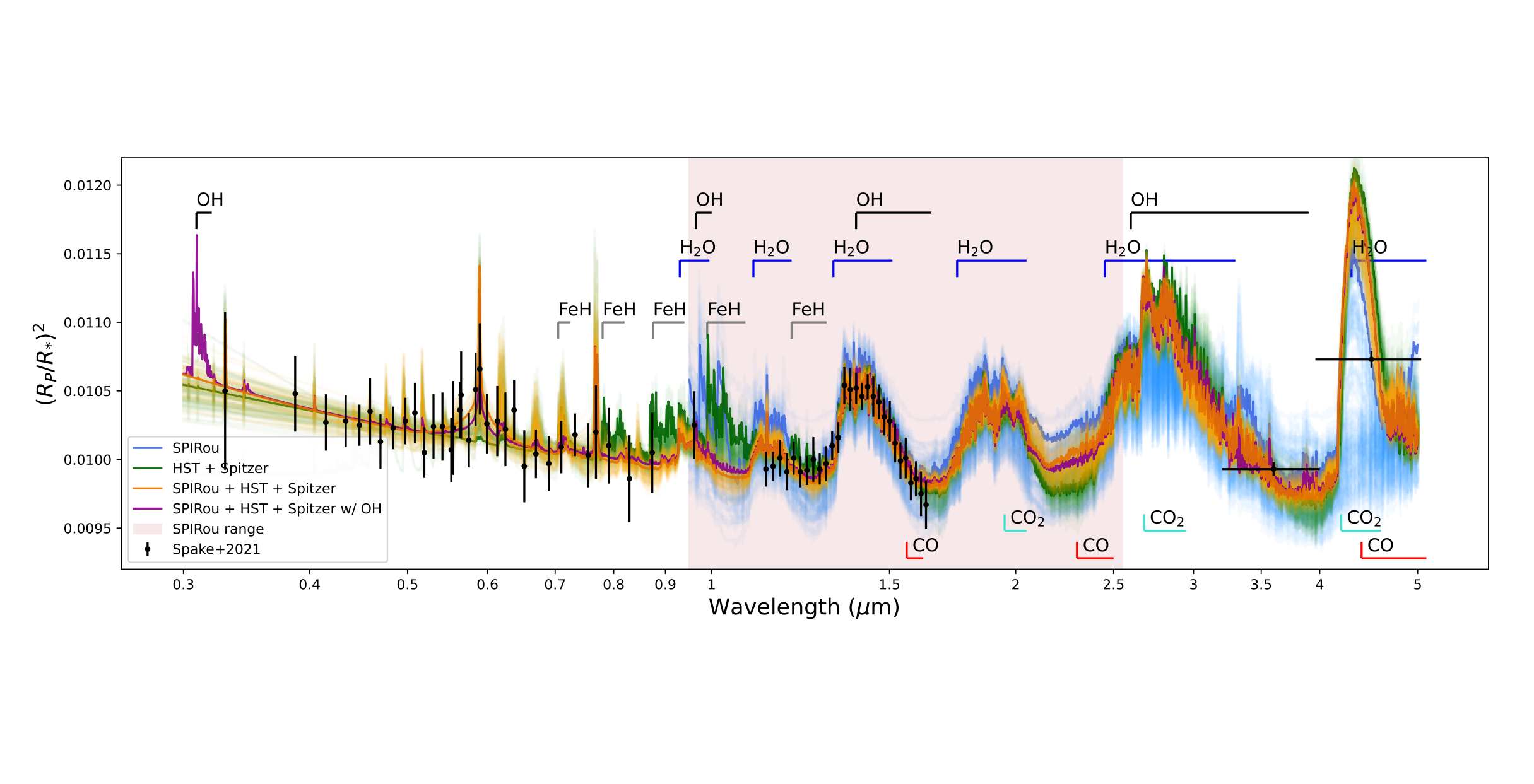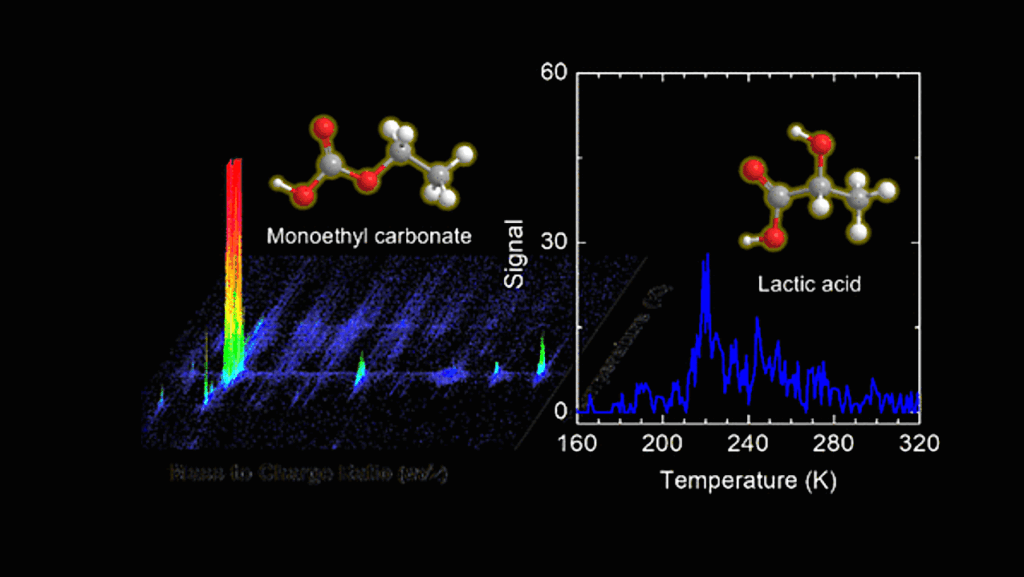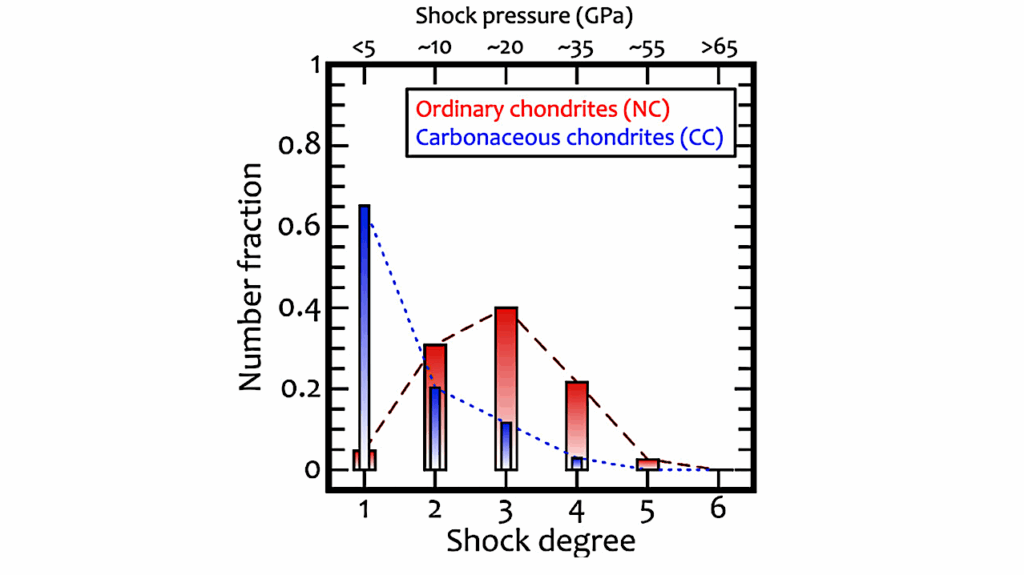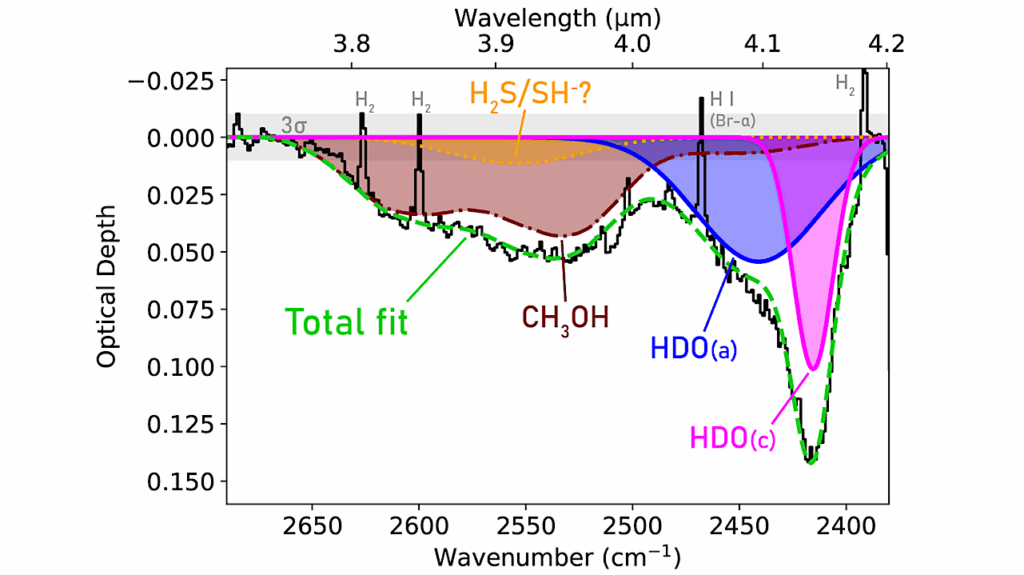CO or no CO? Narrowing the CO Abundance Constraint and Recovering the H2O Detection in the Atmosphere of WASP-127 b using SPIRou

Precise measurements of chemical abundances in planetary atmospheres are necessary to constrain the formation histories of exoplanets. A recent study of WASP-127b, a close-in puffy sub-Saturn orbiting its solar-type host star in 4.2 d, using HST and Spitzer revealed a feature-rich transmission spectrum with strong excess absorption at 4.5 um.
However, the limited spectral resolution and coverage of these instruments could not distinguish between CO and/or CO2 absorption causing this signal, with both low and high C/O ratio scenarios being possible. Here we present near-infrared (0.9–2.5 um) transit observations of WASP-127 b using the high-resolution SPIRou spectrograph, with the goal to disentangle CO from CO2 through the 2.3 um CO band.
With SPIRou, we detect H2O at a t-test significance of 5.3 sigma and observe a tentative (3 sigma) signal consistent with OH absorption. From a joint SPIRou + HST + Spitzer retrieval analysis, we rule out a CO-rich scenario by placing an upper limit on the CO abundance of log10[CO]<-4.0, and estimate a log10[CO2] of -3.7^(+0.8)_(-0.6), which is the level needed to match the excess absorption seen at 4.5um.
We also set abundance constraints on other major C-, O-, and N-bearing molecules, with our results favoring low C/O (0.10^(+0.10)_(-0.06)), disequilibrium chemistry scenarios. We further discuss the implications of our results in the context of planet formation. Additional observations at high and low-resolution will be needed to confirm these results and better our understanding of this unusual world.
Anne Boucher, David Lafrenière, Stefan Pelletier, Antoine Darveau-Bernier, Michael Radica, Romain Allart, Étienne Artigau, Neil J. Cook, Florian Debras, René Doyon, Eric Gaidos, Björn Benneke, Charles Cadieux, Andres Carmona, Ryan Cloutier, Pía Cortés-Zuleta, Nicolas B. Cowan, Xavier Delfosse, Jean-François Donati, Pascal Fouqué, Thierry Forveille, Konstantin Grankin, Guillaume Hébrard, Jorge H. C. Martins, Eder Martioli, Adrien Masson, Sandrine Vinatier
Comments: 23 pages, 13 figures, Submitted for publication in the Monthly Notice of the Royal Astronomical Society
Subjects: Earth and Planetary Astrophysics (astro-ph.EP)
Cite as: arXiv:2303.03232 [astro-ph.EP] (or arXiv:2303.03232v1 [astro-ph.EP] for this version)
Submission history
From: Anne Boucher
[v1] Mon, 6 Mar 2023 15:49:37 UTC (7,351 KB)
https://arxiv.org/abs/2303.03232
Astrobiology, Astrochemistry








